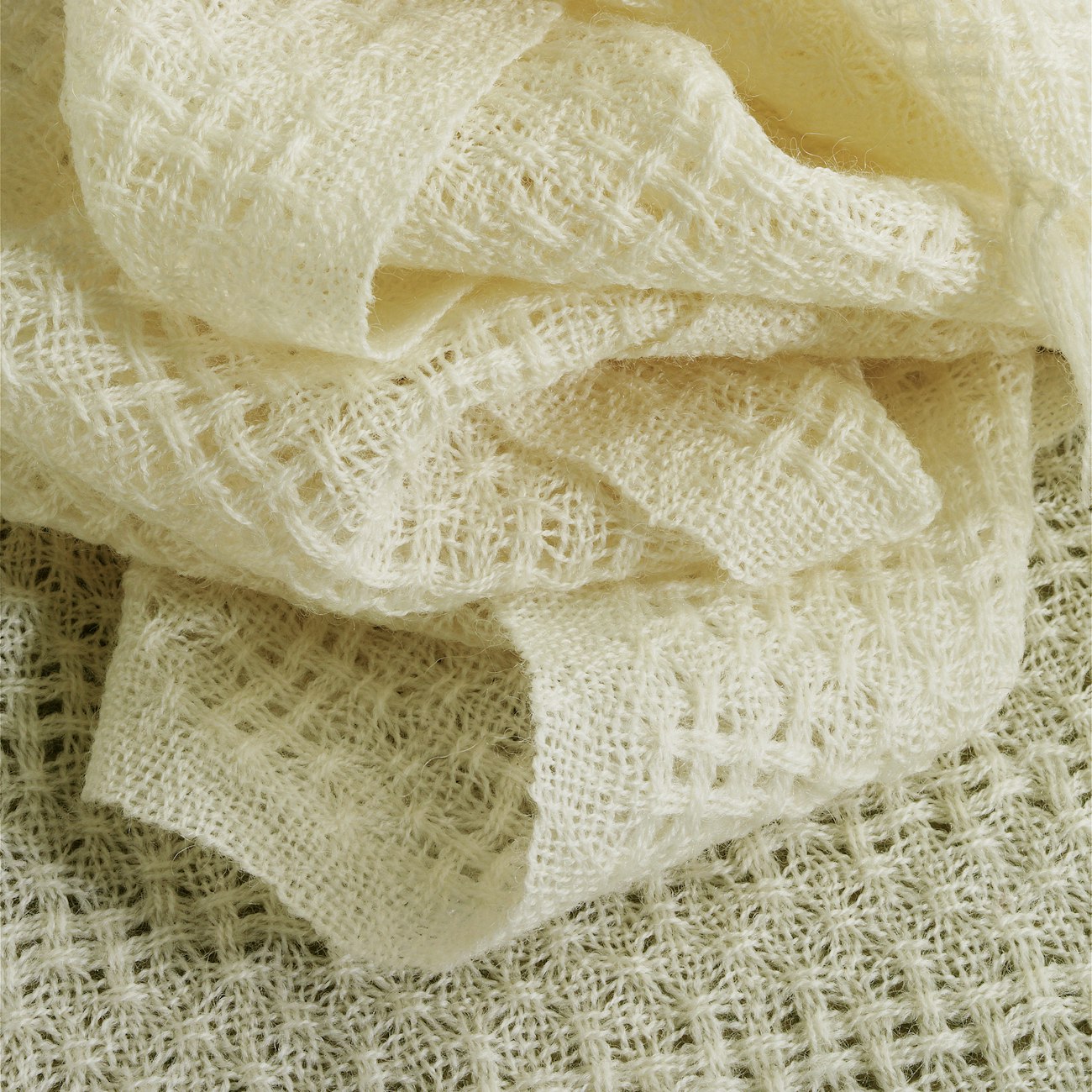I have some questions about weaving huck lace. I have woven several projects and none of them have turned out the way I hoped they would. For one, I used 20/2 cotton for a scarf. The draft was on eight shafts with the blocks threaded in a point. I sett the warp very loosely because I wanted the scarf to be very lacy. I had a terrible time weaving it. I couldn't see the lace pattern on the loom at all. Then, after it was washed, I could see that the diamond design was squished. For the second project, I used a silk warp and a cotton slub weft. I wanted this scarf to be very soft. Again, I couldn't see the lace pattern on the loom OR after it was washed. After washing, the fabric was too stiff and only the slub really showed. The last project was in wool. I couldn't see that pattern during weaving it, either, and after it was washed, it wasn't lacy though there was a pattern. Should I give up weaving huck?
—Sally
Hi Sally!
Lace weaves can be frustrating! Most of the time you really can't see the pattern while you are weaving huck lace. All the threads remain in their vertical and horizontal positions under tension until they can relax off the loom (moving even more during washing) into the curves that make the lacy holes. What you must do is make very sure you are weaving exactly the same number of picks per inch as there are ends per inch. You have to measure this very carefully and not begin the final piece until you are sure you can weave that number of picks per inch continuously. The more open the setts, the harder this is to do (and the more any irregularity of beat will show). After you have woven quite a few inches, if you release the tension and sort of rub what you have woven between your hands, the threads will move into the lace pattern a bit and you can see what it will look like, just to reassure yourself that your pattern is right.

The Light and Lacy Scarf from Handwoven May/June 2009 is a beautiful example of what you can weave with huck lace. Photo by Joe Coca
The materials you use are also important. For the lace interlacement to show, it is almost always best if the warp and weft are the same yarn. If they are different, you tend to see that difference more than you see the lace interlacement. Your slub was also probably thicker than your silk warp, which made that cloth show the contrast between the slubby weft floats and plain weave more than any lacy holes. Wool is tricky to use for lace weaves. Almost all wools will full to fill up the lacy holes, no matter how far apart you sett the threads. For that reason, I love a Swedish wool called Mora. It is an absolutely non-fulling wool but has a wonderful fuzzy texture (unlike Superwash wools); see the "Light and Lacy Huck Lace Scarf" in Handwoven, May/June 2009, pages 62–63.
The setts you use with each fiber are also important. Your sett for 20/2 cotton might have been too open (I'd sett 20/2 cotton at 36 epi/ppi). That yarn doesn't full at all, so while it might be lacy with a more open sett, it can also look a bit stringy and not show enough contrast between the plain weave parts and the lacy holes. For lace weaves, I usually like whatever sett works best for a balanced plain weave in the yarn I'm using.
Give huck a few more tries, Madelyn
Updated March 13, 2022.

